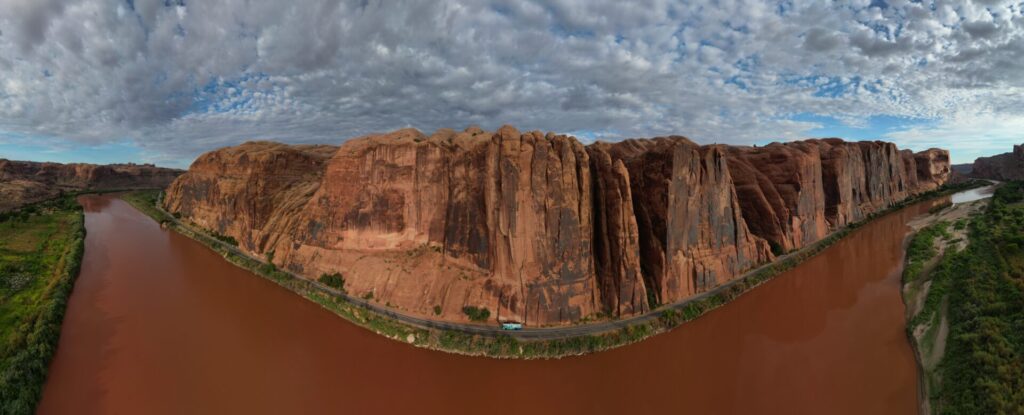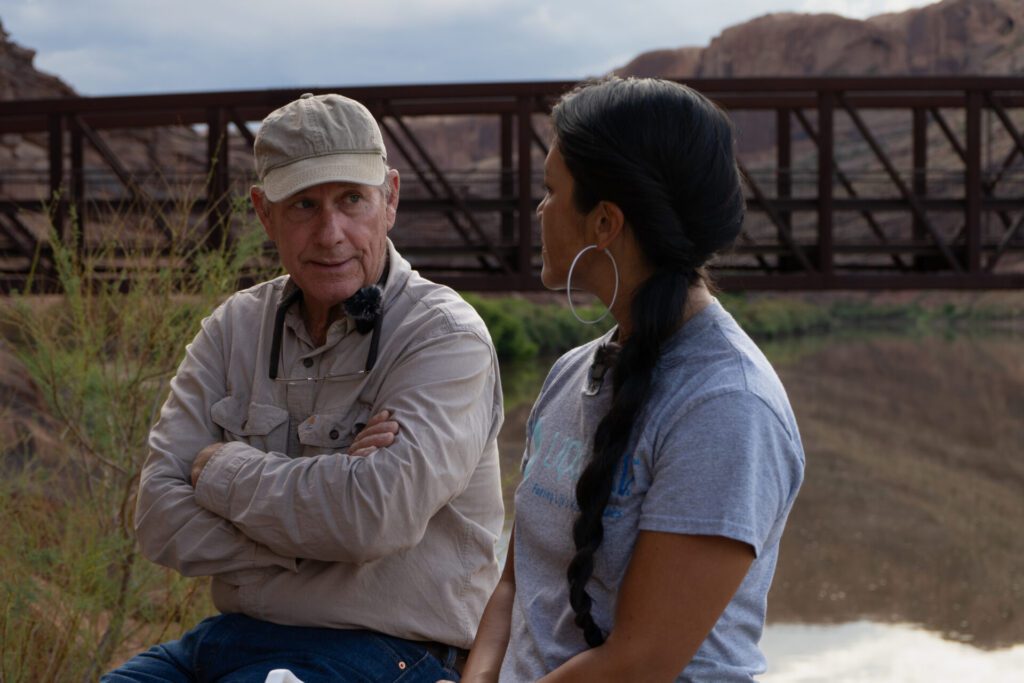While on tour with Liquid IV I had a chance to stop in one of the most beautiful places I’ve traveled: Moab, Utah.
I grew up house boating on the Colorado River and when I learned it’s existence is at risk, I found it difficult to believe.
It’s here I got to learn more about the threats to the Colorado River, read on for more…

About the Colorado River
Spanning an impressive 1,450 miles, the Colorado River is a lifeline of the American Southwest, sculpting some of the nation’s most awe-inspiring landscapes, including the Grand Canyon.
Starting in the Rocky Mountains of Colorado, it winds through seven U.S. and two Mexican states, supplying vital water for nearly 40 million people, and irrigating over 5 million acres of land. Not only is it a recreational haven, supporting activities like whitewater rafting and fishing, but it also plays a crucial role in power generation with its 29 dams, including the famous Hoover Dam, creating hydroelectric power for millions.
While I was traveling here, I learned that these dams, which solved many problems years ago, might be causing new issues and problems today…

Why the Colorado River is at Risk
The Colorado River faces a severe over-allocation crisis. It’s water is promised to too many places and it far exceeds the supply.
How did this happen? The outdated Colorado River Compact of 1922, which divided the river’s waters among seven states without a clear projection of the region’s future water demands and climate conditions.
This has led to promises of water that the river cannot fulfill, creating a chronic deficit as cities expand and agriculture demands increase. The situation is further aggravated by climate change, which has reduced snowpack and altered rainfall patterns, contributing to a historic “megadrought.”
Lake Mead and Lake Powell, the river’s largest reservoirs, are at alarmingly low levels, affecting water supply to millions, endangering hydroelectric power production, and harming ecosystems. Addressing the river’s plight requires urgent, adaptive water management solutions that can reconcile human demands with the imperatives of climate resilience.
While I was interviewing John Weisheit, the Colorado Riverkeeper, he shared with me some of the negative effects of the dams – including the inability for parts of the river to have a bug population.
See the full video below…
Must Know Travel Tips for Moab
If you’ve ever considered visiting Moab, you should. It’s absolutely stunning and the views are unlike any that can be seen elsewhere in the world.
On that same note, there are things I WISH I KNEW about traveling here. Namely: the town is tiny, a car is required and don’t show up without tour reservations because they are often booked up WAY in advance.
Want more tips? Read it on the full blog post.
What’s Next for the Colorado River?
To be honest, the future of the Colorado River is up to us. It’s up to our voices our votes. You can learn more about this work and the work of the Waterkeeper Alliance here.